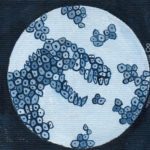Link to Pubmed [PMID] – 24450949
Link to DOI – 10.1186/2049-2618-1-21
Microbiome 2013 Jul; 1(1): 21
Soil is among the most diverse and complex environments in the world. Soil microorganisms play an essential role in biogeochemical cycles and affect plant growth and crop production. However, our knowledge of the relationship between species-assemblies and soil ecosystem processes is still very limited. The aim of this study was to generate a comprehensive metagenomic survey to evaluate the effect of high-input agricultural practices on soil microbial communities.We collected soil samples from three different areas in the Argentinean Pampean region under three different types of land uses and two soil sources (bulk and rhizospheric). We extracted total DNA from all samples and also synthetized cDNA from rhizospheric samples. Using 454-FLX technology, we generated 112 16S ribosomal DNA and 14 16S ribosomal RNA amplicon libraries totaling 1.3 M reads and 36 shotgun metagenome libraries totaling 17.8 million reads (7.7 GB). Our preliminary results suggested that water availability could be the primary driver that defined microbial assemblages over land use and soil source. However, when water was not a limiting resource (annual precipitation >800 mm) land use was a primary driver.This was the first metagenomic study of soil conducted in Argentina and our datasets are among the few large soil datasets publicly available. The detailed analysis of these data will provide a step forward in our understanding of how soil microbiomes respond to high-input agricultural systems, and they will serve as a useful comparison with other soil metagenomic studies worldwide.

